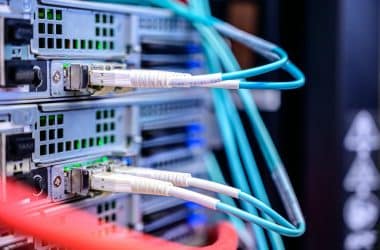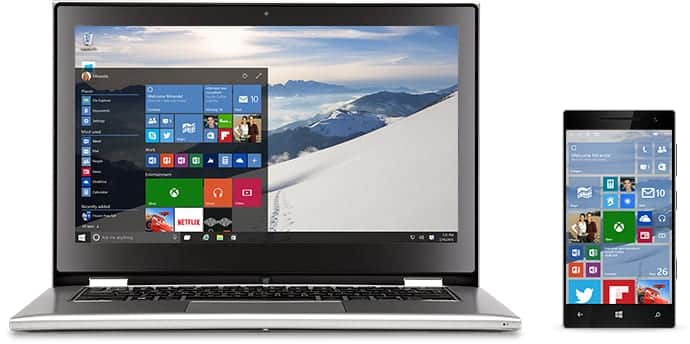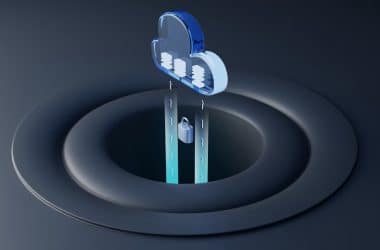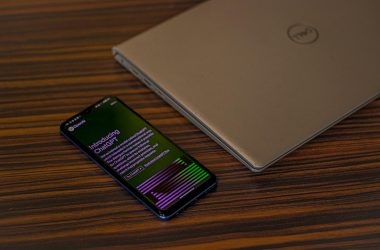Solar Energy Basics
Solar energy is defined as radiation of various wavelengths emitted by the sun. A solar-powered generator may be defined as a device or group of devices used to generate solar power using the sun’s rays (solar radiation/solar energy).
Photovoltaic solar panels are the most common technology used to generate solar power around the world. There are a variety of ways to utilize solar power, and they will be explained below.
Contents
- Photovoltaic Cells
- What is the Problem with Solar Power?
- Backing Up Solar Power Plants
- Is Solar Right For You?
- How do I set up a solar power system and what wattage do I need?
- If not the entire house, which appliances should I power?
- Transfer Switch
- How much space do I need for solar panels?
- Relationship between cost and weather: What happens when it becomes overcast?
- Importance of Appliance Efficiency to the Cost of A Solar Setup
- Importance of Battery Efficiency to Solar Setups
- Can Solar Panels Fully Power My House?
- How to Store Solar Energy or Back Up Solar Panels
- Solar Panel and Solar Cell Efficiency
- Total Area and Single Cell Efficiency
- Control of Solar-Powered Generators
- Factors Affecting The Cost of Solar Power
- Cost of Solar Power (including residential)
- Solar Thermal Energy
- Solar Water Heaters
- Applications of Solar Power
Photovoltaic Cell Technology
Photovoltaic cells are constructed of semiconductor materials (solid-state) which convert the sun’s rays directly into electricity. People are most familiar with this type of solar power generator and it is also the most common for residential use. Solar cells are encased inside solar panels for protection.

How photovoltaic solar technology works: NASA Explanation.
Some of the semiconductor materials used in the construction of solar cells and solar panels includes:
- Monocrystalline Silicon.
- Polycrystalline Silicon.
- Amorphous Silicon.
- Gallium Arsenide (GaAs).
- Cadmium Telluride (CdTe).
- Titanium Dioxide.
- Copper Indium Gallium Selenium (CIGS).
- Copper Zinc Tin Sulfur/Selenium (CZTS).
- Carbon Nanotube.
Some of the types of solar photovoltaic cells include:
- Silicon wafer.
- Thin Film.
- Dye Sensitized Thin Film.
Advantages of Solar Power Systems
- Solar panels (PV) are completely solid state and require no maintenance.
- Solar panels have a long lifespan of 20-30 years.
- They emit no pollutants nor radioactive waste, so they can safely be used indoors.
- Solar technology requires no fuels that are susceptible to price fluctuations.
- They produce no noise or vibration.
- Photovoltaic cells can be manufactured for use on almost everything, because thin-film panels can be printed on plastic, glass and other substrate.
- They are a convenient way to keep portable electronics’ batteries charged if solar cells are attached to the back of them.
- Solar panels and other types of solar technology typically generate more electricity when electricity demand is higher due to increased solar radiation. Electricity demand is highest when solar radiation is greatest.
One reason for this is increased air conditioner power consumption due to both increased use and inverters turning air conditioners up to meet cooling demand which automatically increases with environmental temperature.
- The cost of solar power remains the same over the solar generators’ entire 30 year life because they require no fuel.
- More light can be reflected on solar panels during low light periods using mirrors, this is more economical than purchasing additional solar panels to compensate for cloudy weather, but is more complex to set up and I do not know of any organization which offers that.
- Solar power can help the electricity grid during peak hours when electricity demand is highest (because solar panel electricity generation peaks when electricity demand is highest), making it possible to decrease the amount of blackouts and brownouts caused by shortfalls in generating capacity.
- Use of solar-powered generators as an alternative to fossil fuels means that less fossil fuels will be used to generate electricity, causing fossil fuels to last longer and helping to mitigate increases in demand which normally result in an increase in their cost. Greater fuel demand = higher fuel prices.
Disadvantages of Solar Power
- The manufacturing cost of solar technology is high.
- Solar technology in general is expensive to install, this is an even bigger issue than the cost of the panels themselves.
- The cost of electricity from central solar power plants is high.
- Solar panel efficiency is usually low, therefore the power production per square meter is low. An average of 110 to 200 watts per square meter. This means that solar power plants (not rooftop systems) occupy a large amount of land.
You must use an electricity usage meter (such as the Kill-A-Watt for example) to determine the power consumption of individual appliances which often varies. If you are using a grid-tie setup to solar power your building, then you don’t need to worry about metering your appliances yourself.
How To Set Up Solar Panels/How To Solar Power Your Home:
This section has a page of its own.
If not the entire house, which appliances should I power with my solar system?
Some appliances are easier to power with solar panels than others. This is due to the fact that it is easier to gauge their power consumption. A refrigerator, for example, is not the most straightforward appliance to solar power because of its intermittent operation which varies with weather, provided that the kitchen is not climate controlled (heated or air-conditioned).
In most cases, whichever appliance you choose to power with solar energy, the ratio of the amount of money spent on the solar setup to the amount of money saved by the solar panels is the same.
Therefore, powering your lamps with solar energy won’t necessarily save you more money and supplying those with solar power requires an electrician which has to be paid, so that actually costs more than solar powering plug-in appliances such as standing fans.
It is important to note that solar panels are cheaper in large quantities, so if you want to power your house with solar energy, then buy all the panels at once. You can obtain them for less than $3 per watt in such quantities.
Transfer Switches Make Solar Power A Reliable Option
A transfer switch is a device that enables you to directly solar power your items with a minimal amount of batteries in such a way that you would be backed up by the electricity grid, but without a grid-tie inverter/net metering system. You could also enjoy a limited amount of power during power outages from the electricity grid.
Basically, the solar panels would charge very few batteries, even a couple depending on your setup, their size, and your power consumption, and those batteries would buffer that power to your appliances. If the weather becomes cloudy for an extended period of time, the transfer switch can switch you over to the electricity grid so that you will not have to purchase extra panels to compensate for the reduced power production during that weather.
The capital cost of such a setup can be significantly lower than that of a traditional setup which consists of extra panels, because extra panels cost plenty of extra money. In other words, the cost per watt to install this is far less than a typical setup, so it pays for itself much faster.
The drawback is that it only saves energy during the day so it cannot completely eliminate your electric bill, but it can reduce it.
If you know how to set up a regular 120 volt inverter, batteries, etc, you can avoid the electrician’s fee and do the in-home part of this job yourself.
How Much Space Do I Need For Solar Panels?
To determine how much space you would need to place your solar panels flat on a surface such as your roof, you would first determine how much power a square metre of them would generate.
You would do this by multiplying the decimal efficiency rating of the panels by the amount of sunlight received by the earth per square meter when it is sunny (this is just a guideline) which is 1,000 Watts/sq metre.
The average solar panel is 10% efficient (it can be as much as 22%, but it is usually 10%, so use 10% as a guideline). Multiply 0.10 by 1000 and the result is the number of watts per square metre that specific model of panel generates which is 100 watts/square metre. You would purchase many of that same panel to achieve your desired electricity generation capacity.
Second: To finally determine how much space you would need in square metres on the surface you are putting the solar panels flat on top of, you would divide the number of watts that you intend to purchase by the watts/square metre figure which is 100.
So if you are purchasing 300 watts of those solar panels, you would divide 300 by 100 and the result is that you would require three square metres of panels to generate a maximum of 300 watts of power.
If you want the U.S. average of 3,000 watts of solar panels for your system, that would require 30 square metres of space.
For smaller projects, it is easier to use small units such as square centimetres. Simply divide the watts per square metre figure by 10,000 to determine the wattage per square centimeter. If you prefer square inches, then divide the watts per square metre figure by 1550.0031.
Example: 120 watts/square metre (12% efficient) in square centimetres is 120 / 10,000 = 0.012 watts per square centimeter, or 12 mW/square centimeter. Visit the power consumption page for more information on energy units.
Solar-Powered Blackberry Example: If a Blackberry 8320 has 54 square metres of space available on the back of it for solar cells, then if you were to attach 12% efficient solar cells which cover that area, they could generate 648 mW or 0.648 watts total, if the back of the blackberry is exposed to direct sunlight.
Calculating area of a rectangle or square in square centimetres: measure the length and width of the flat object that you want to determine the area of, and then multiply the two together because area = length x width. The laptop area I measured was 24 x 30 cm = 720 square cm.
Solar-Powered Laptop Example: If you wanted to cover the back of a laptop monitor with 30 cm x 24 cm (720 square cm) of 12% efficient solar cells, they could generate 8.64 watts, which is not ideal for a laptop. A 20% efficient solar cell would be much more useful because it could generate 14.4 watts. All of this only applies if the solar cells are exposed to direct sunlight
Importance of Apparatus/Appliance Efficiency To the Cost of A Solar Power System
In some cases, you can lower the overall initial cost of a solar system significantly by reducing your power consumption. For example:
Lighting: Switching from incandescent to fluorescent light bulbs can have a great impact on your energy usage. Solar panels cost $2-$4 per watt, excluding installation. This is extremely expensive compared to fluorescent light bulbs which cost $0.26 per watt and sometimes less.
If you had to choose a 75-watt incandescent over a 15-watt fluorescent, both of which are a similar brightness, you would have to spend an additional $120 to $240 on solar panels to produce enough power for the incandescent light bulb. The return on the fluorescent investment in such a case would be very sound and prompt.
Importance of Battery Efficiency to Solar Power Systems, Battery Technology Varies (Significantly)
Another factor which can significantly affect the wattage of the solar panels needed (this applies to off-grid setups) is the efficiency of the batteries you will charge with the solar power system.
Remember that batteries don’t only back up your solar system at night, they also act as a buffer for solar power, the amount of energy supplied by the batteries is always less than the energy supplied to them by solar panels or whatever else charges them.
Example: If a battery is 80% efficient then you get back 80% if the solar power that you supplied to it, the other 20% is lost as heat.
For the sake of simplicity: If you were originally contemplating a 100% efficient lithium-ion battery (which is not realistic),and decided to use a 50% efficient lead-acid battery because it is “cheaper”, you would need to purchase twice as many solar panels.
The lead-acid batteries waste 50%-80% of the energy produced by the solar panels, so if you purchased your solar power system with the hope of getting 1,000 watts from it, you would only get 500 watts, so this is why you would need to buy twice as many panels.
Lead-acid batteries are 50% to 80% efficient, and lithium-ion batteries are 80% to 99% efficient.
So, by doing this, you would actually incur a huge up front cost, which is the cost of the extra panels.
Can Solar Technology Fully Power A House?
Yes, they can. Any type of generator can be used to power your house completely, but solar panels are costly, so people usually buy them to supply only a portion of their electricity, or to partially offset electricity consumption.
How Do I Store Solar Power Or Back Up My Solar Panels?
Solar power can be stored or supplemented using a variety of methods, some common methods include:
- Deep-cycle lead-acid batteries.
- Natural Gas/Propane (LPG) fueled generator.
- A combination of the above.
You can either use a large bank of batteries which are kept charged by the solar panels during the day to supply the house with electricity all day, so the solar panels would not directly power the house.
You can also use a smaller and much cheaper bank of batteries which would be charged by the solar panels during the day, and the batteries would supply the house with electricity all day.
However, the natural gas or LPG powered generator would backup the solar panels and turn on to help charge the batteries if they are not charged enough (for instance, if it is cloudy for an extended period of time, or at night).
It is possible to use grid power to help the solar power system to charge a small bank of batteries during the day if it is cloudy, and at night, your electricity could come directly from the utility company when electricity rates are cheaper. A DC (direct current) battery charger is required for this.
Converting Battery Power To 120 Volts AC For Appliances
If you want to use batteries to supply solar power directly to appliances, you have to purchase an inverter, which is a device that converts 12 or 24 volts DC to 120 Volts AC, which appliances use. You would then plug the appliances into the inverter’s 120 volt outlets (or 220 volts in Europe).
Net Metering (Connecting Your Solar Power System To The Electricity Grid)
There is an alternative to storing energy produced by solar panels, which does not involve directly powering the household appliances. You can contact your power company and ask them for more information about net metering and their policies.
You would purchase a grid-tie inverter, which the solar panels would supply DC current to. A grid-tie inverter would convert that DC current into AC current (pure sine wave) and supply it to the electricity grid through a power meter.
In this case, the solar panels would be used to offset your power consumption by turning your power consumption meter backwards. When it is turned backwards, you are charged less for electricity.
For example. If you consumed 600 kWh (kilowatt-hours) after a month, and the solar panels generated 200 kWh during that month, then they turn the meter back from 600 kWh to 400 kWh.
Depending on the power company, you may or may not be paid a fair rate for the electricity generated by your solar panels, this is another reason you need to contact them and learn more about their policies.
Solar Panel And Solar Cell Efficiency
Difference Between Total Area Efficiency And Single Cell Efficiency
‘Total Area Efficiency’ is defined as the performance of an entire (normal) solar panel that consists of multiple solar cells and single cell efficiency is the performance of a single solar cell without a protective panel. Solar panels reflect some light away from solar cells, and they can even trap some heat, which worsens solar cell efficiency.
Another reason an entire solar panel is not as efficient as a single solar cell is because of electrical resistance encountered when electricity is trying to pass through the cells sequentially. Total area efficiency is the most realistic efficiency rating.
Your Ability To Control Solar Panels And Electricity Demand
The amount of solar power your system generates is not controllable, but, they do generate more electricity during times of increased solar radiation intensity, which is good because electricity demand also increases at that time.
Solar Thermal Energy
Solar thermal power plants convert the thermal energy radiated by the sun into electricity or use it to provide heat using the following methods:
– Steam: The heat provided by the sun’s rays can be used to heat a boiler, which produces steam by boiling a fluid such as water or mineral oil (at a temperature of 400 °C), and the steam enters the steam admission section, and is passed over steam turbine blades by a high pressure nozzle, causing them to turn.
Next, they turn an alternator which converts mechanical energy into electrical energy. Concentrated sunlight may be used as a heat source for this type of generator by using motorized mirrors (heliostats) to focus a sunlight on the boiler.
– Stirling: A stirling engine is a hot air engine which utilizes a temperature difference between both sides (cylinders) to convert heat energy into mechanical energy, which is then converted into electrical energy by an alternator.
Concentrated sunlight may be used as a heat source for this type of generator by using motorized mirrors (heliostats) to focus a sunlight on the stirling engine.
– Thermoelectric: A thermoelectric device is a very compact, solid-state (non-mechanical), flat device which can generate electricity when heat is applied to one side of it. As heat flows from that side to the other side, where heat is dissipated with a radiator or a large heat sink, some of the heat is converted into electricity.
Concentrated sunlight may be used as a heat source for this type of generator by using motorized mirrors (heliostats) to focus a sunlight on the hot side of the thermoelectric module. The greater the temperature difference between the sides of the modules, the greater the power output.
Applications Of Solar Technology
Applications of solar energy include almost everything, but water heating is one of the most cost efficient ways to put solar energy to use.
Refrigeration and Air Conditioning: Heat from the sun’s rays can be used to power heat powered refrigerators, such as absorption refrigerators. Photovoltaic panels (commonly known as solar panels) can be used to power the common type of air conditioner, which uses the vapour compression cycle to cool.
Water Heating: Solar water heaters normally heat water by using dull black copper tubing to absorb sunlight which then heats water as it passes through the tubing. Solar panels can also be used to generate electricity to power conventional electric water heaters.
Portable Electronics: Portable electronics such as cellphones and notebook computers are battery-powered, and it is common for their batteries to die at the worst times, these devices can be manufactured with solar cells printed on them to keep their batteries charged.





Comments 1